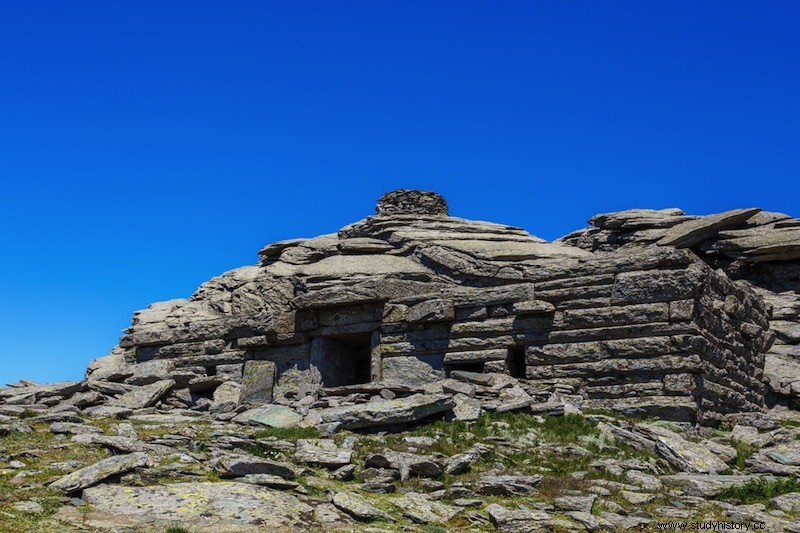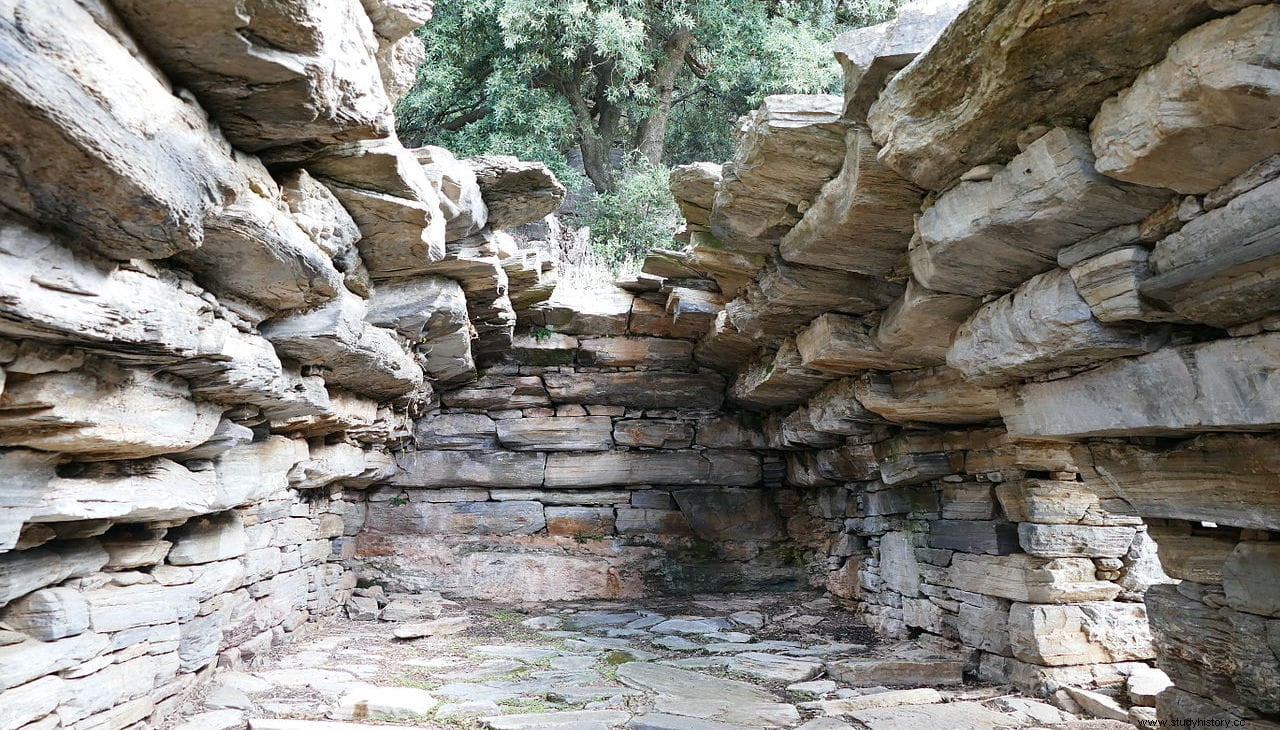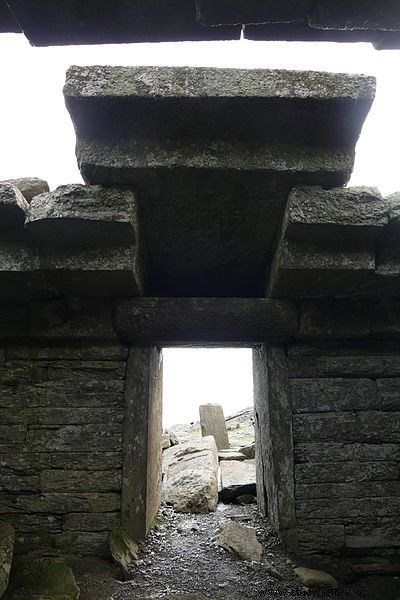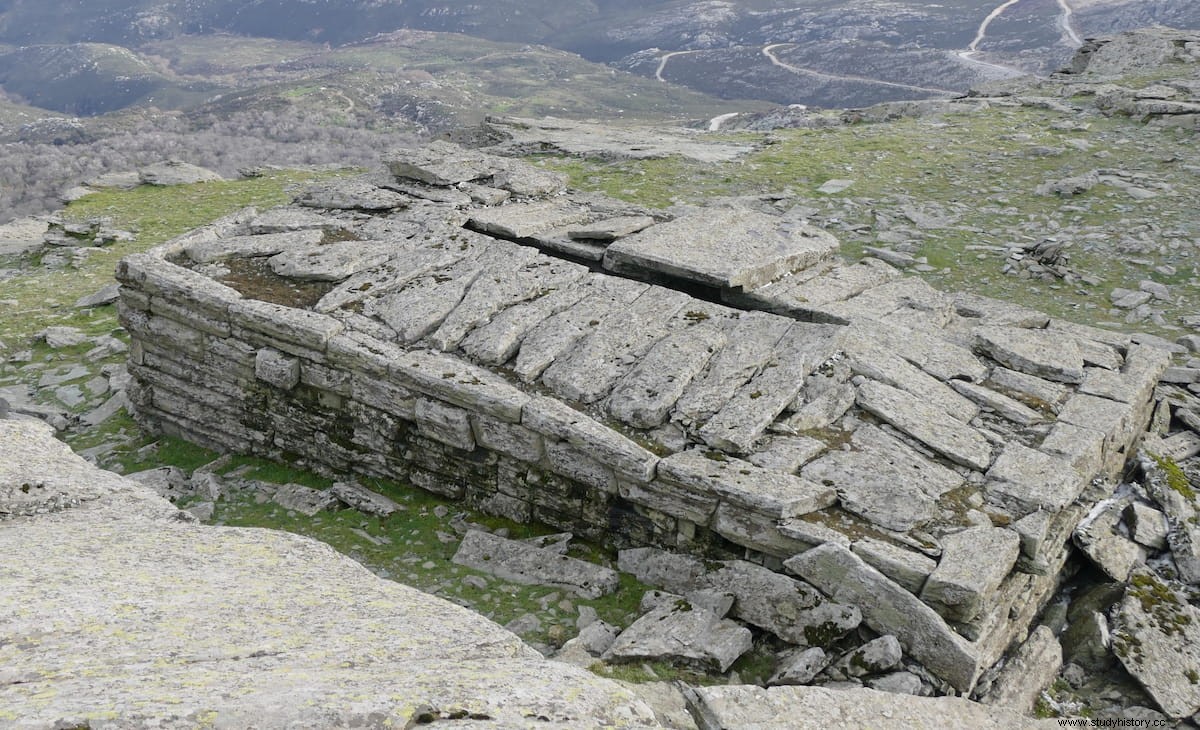At this point it seems impossible that ancient buildings as large as the dragon houses on the Greek island of Euboea could not have been dated, and that practically nothing is known about them.
The dragon houses (in Greek Drakospita ) are 20 large buildings spread across the south of the island of Euboea, the sixth largest in the Mediterranean, located off the eastern coast of mainland Greece.
They are rectangular constructions based on huge stones, of the type known in ancient times as cyclopean , placed one on top of the other without any type of mortar or mortar. The spaces between them are filled with other smaller stones, and the ceiling is covered with equally large stone plates, leaving a hole for the entry of light (or for the exit of smoke from the hearth or the view of statues of deities in the interior, according to interpretations).

The best preserved are Monte Oque, in the extreme southeast of the island and about six kilometers north of the coastal town of Caristo; and the three from Palli-Lakka, in the area of the old marble quarries on Mount Kliosi.
They are called dragon houses not because its construction is attributed to these mythological animals, but because local tradition attributed superhuman powers to its unknown creators, given the size of the stone blocks.
Although they were first described at the end of the 18th century, an exact dating of the buildings is still lacking today. Some specialists believe that they can date back to the 7th century BC, being the precursors of the later Greek temples. Others consider them to be defensive constructions from the Hellenistic period, from the 3rd-4th century BC.

Its discoverer was the British geologist John Hawkins, who climbed Mount Oque (1,398 meters above sea level) on October 21, 1797. There he found a construction that he inspected and made drawings and sketches of, reaching the conclusion that it must be older than classical temples.
In the following years numerous archaeologists visited the site, such as Heinrich Ulrichs, who published a monograph on the subject in 1842. The Frenchman Jules Girard arrived ten years later, already collecting descriptions of the Palli-Lakka constructions. All of them pointed out the similarities with the Mycenaean constructions of Tiryns and Mycenae, especially in the configuration of the roof. That is how they were considered until Theodor Wiegand established in 1896 that they had no relationship.

And in more recent times the main investigations are those of the North Americans Jean Carpenter and Dan Boyd.
The building on Mount Oque is located at an altitude of 1,386 meters and has dimensions of 12.7 by 7.7 meters, with a door in the center of the south wall, 2 meters high by one meter wide and crowned by a huge lintel of 10 tons of weight that protrudes above it, and small windows on the sides.
The walls have an average thickness of 1.4 meters, adequate to support the heavy stone ceiling, and the interior rises up to 2.4 meters. The surface of the construction is 48 square meters and the entire floor was also covered with stone panels.
The three Palli-Lakka constructions are very similar in size to the one on Mount Oque, but the walls are less thick, only 1.1 meters on average. The stone blocks used are smaller in size and, in general, the style is more rustic, less elaborate and possibly older.
There is absolutely no reference to these buildings in the ancient sources, so all the information available about them comes from the legends and folklore of the areas where they are found.
The excavations carried out in 1959 in the building on Mount Oque brought to light ceramic fragments from the Hellenistic period and some trusses, on one of which there is a small text in an unknown script, which are now kept in the archaeological museum of Caristo.

Between 2002 and 2004 researchers from the department of astrophysics at the University of Athens studied the orientation of the house on Mount Oque, concluding that it coincided with the appearance of Sirius in the sky around 1100 BC. and pointing to a possible function as an astronomical observatory.
In the absence of further investigation, the dragon houses they remain a bit of a mystery to archaeologists. They could well be the key to understanding the evolution of later Greek architecture, or on the contrary, simple shelters for shepherds prior to the Roman conquest.
